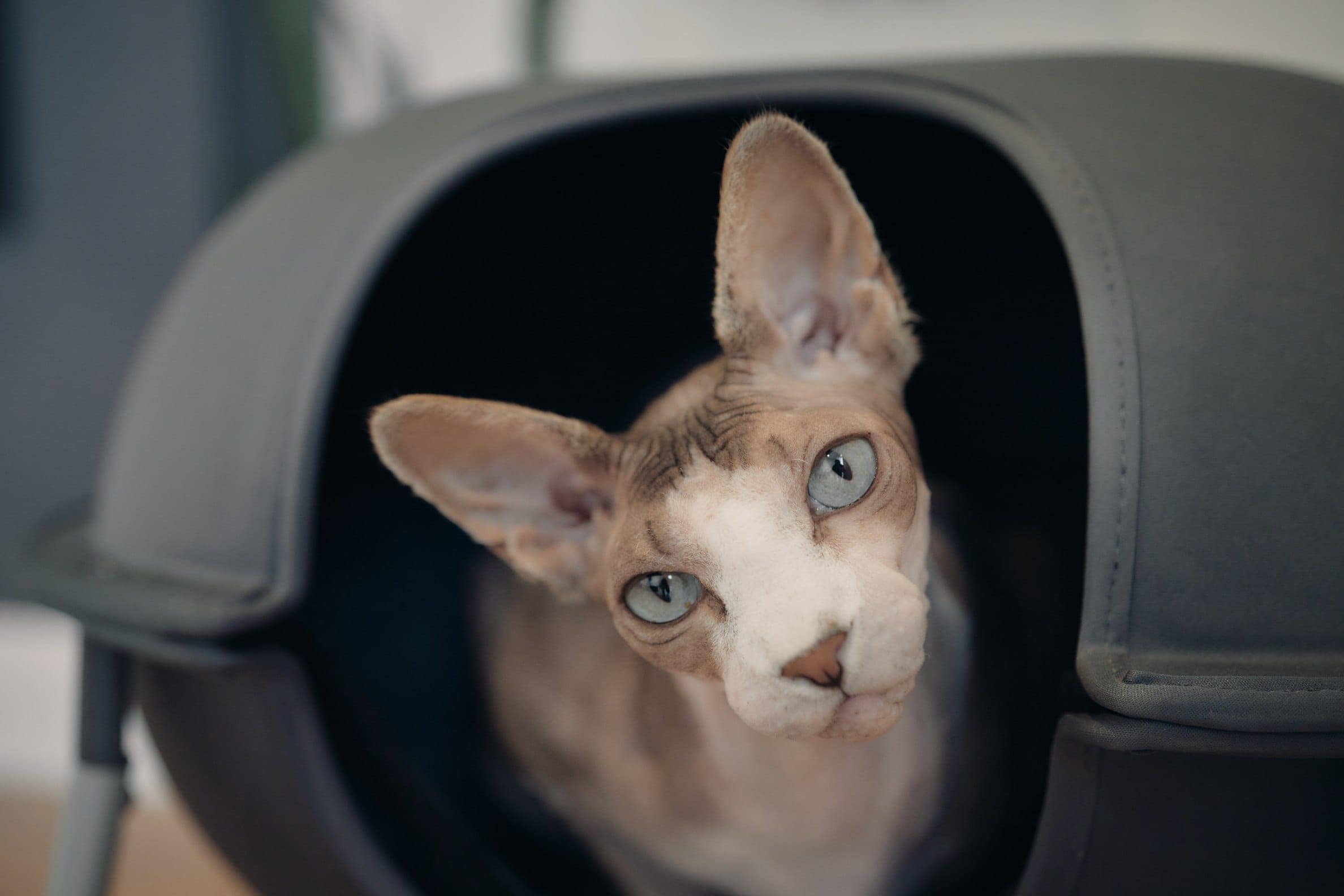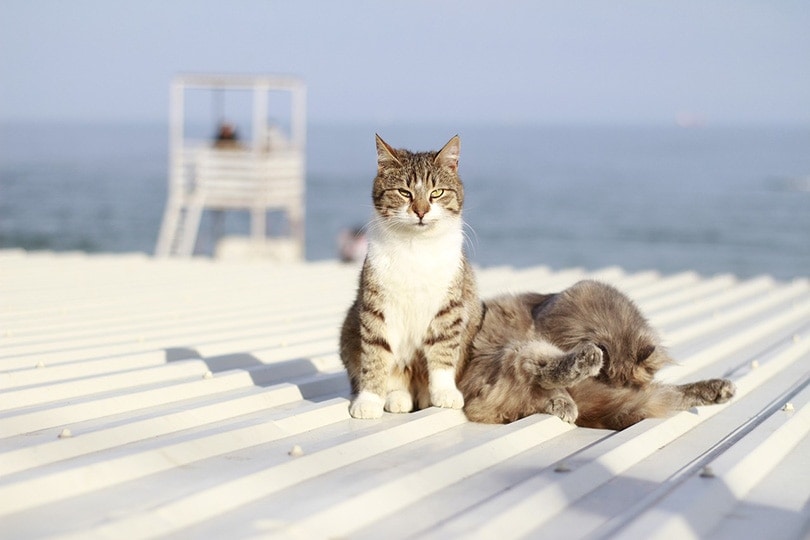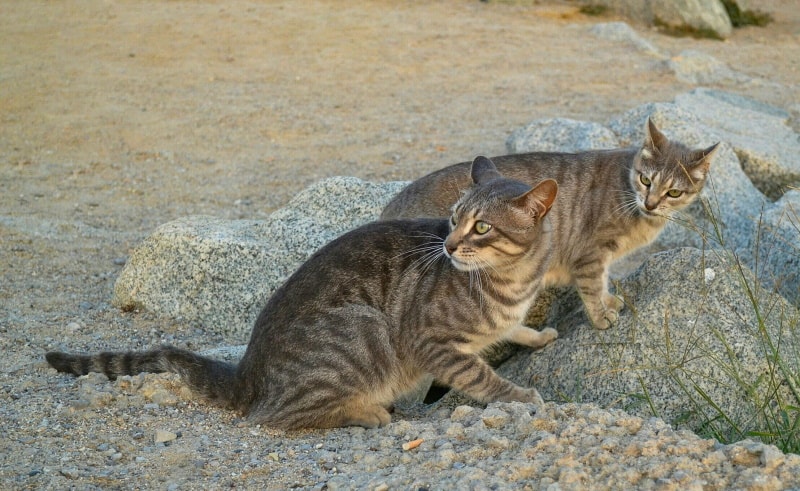8 Different Types of Cat Tails (With Pictures)

Updated on
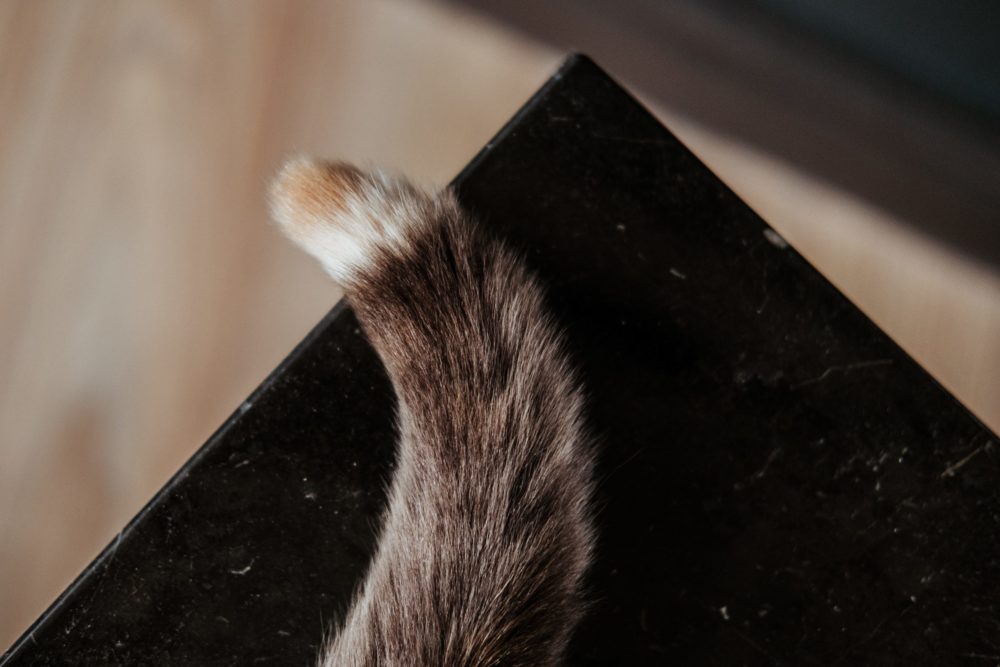
Anyone who has ever owned a cat knows that felines make wonderful pets. From the tips of their cute little noses down to the ends of their tails, cats are beautiful animals that come in a wide variety of sizes, types, and colors.
Like dogs, cats use body language to communicate their emotions to other animals and people in their vicinity.1 For example, when a cat flicks or lashes its tail about, it’s usually trying to communicate that it’s agitated or angry. A slow, waving tail indicates a cat is super focused on something, such as perceived prey, while getting ready to pounce.
One way to differentiate between the many types of cats is the tail. We’ve put together this list of eight different cat tails we hope you find interesting—we do!
The 8 Different Types of Cat Tails
1. Bobbed Tail
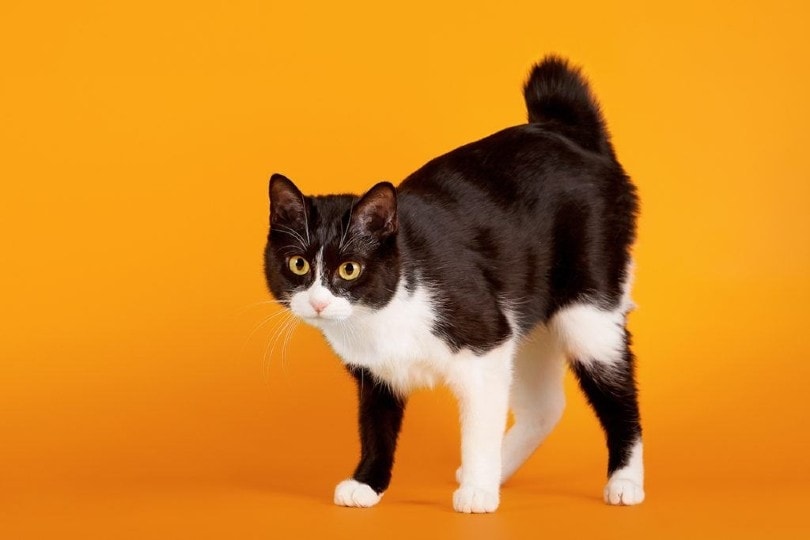
A cat with a bobbed tail has a nub-like tail that closely resembles a rabbit tail. Cat breeds with stubby, bobbed tails usually got that way due to a natural genetic mutation. Bobbed tails are often called bobtails. This type of tail often has just a bit of fatty tissue instead of a full tail with bone structure.
Cats with bobbed tails stand out from the crowd of other domesticated cats because their tails aren’t long and expressive. Some common cat breeds with bobbed tails include the Japanese Bobtail, American Bobtail, Pixie-Bob, and Kurilian Bobtail.
2. Long Tail
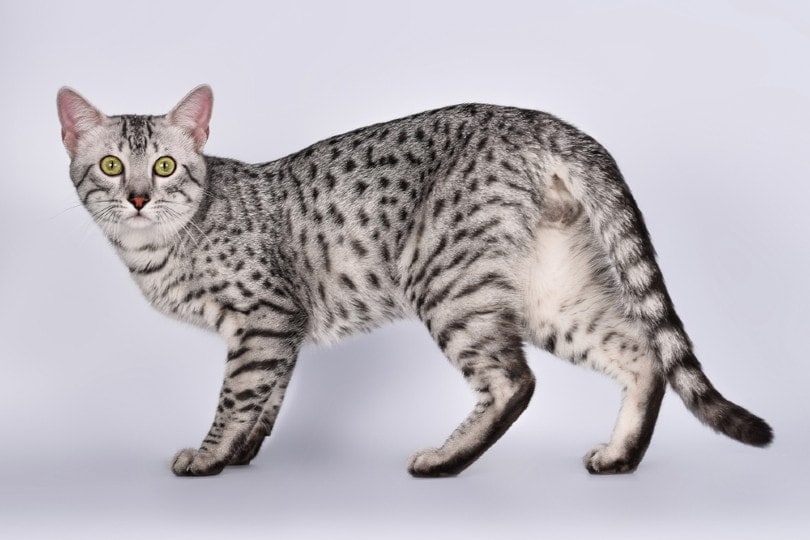
Usually, a cat’s tail length is relative to its body length. However, some cats are long-tailed breeds with especially long tails. For example, the average domesticated cat has a tail that’s about 12 inches long. However, a long-tailed cat like a Maine Coon can have a tail that’s up to 16 inches long.
A cat with a long tail can use its tail to warm their body or help them balance when climbing. Common cat breeds with long tails include the Cornish Rex, Egyptian Mau, Norwegian Forest Cat, and the Balinese.
3. Fluffy Tail
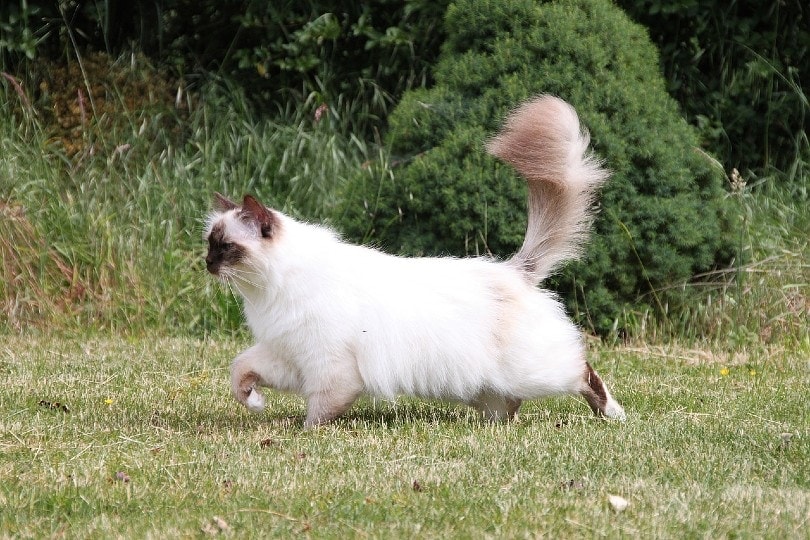
A cat with a fluffy tail has a big, bushy tail covered with long hair. Fluffy-tailed cats look incredible and are very photogenic. A cat with a full fluffy tail tends to be protective of its big, puffy tail because it knows all that hair is vulnerable to things like a dirty litter box or even other animals that want to play with it.
Some cat breeds known for having majestic fluffy tails include the Himalayan, Birman, and Ragdoll.
4. Curly Tail

While many cats curl their tails around themselves to keep warm, very few have naturally curly tails. Curly-tailed cats have kinks in their tails that are caused by an uncommon genetic mutation2 that many people think dates back to early Siamese cats.
While it’s not common to see a curly-tailed cat, these felines do exist, and they’re usually mixed-breed cats. However, you can sometimes find curly-tailed purebred cats, including the Russian Blue, Bengal, and Siamese.
5. Ringed Tail

A cat with a ringed tail has a curly tail that shapes a ring towards its back. While this type of tail is similar to a curly tail, a ring-tailed cat typically has a curlier tail. If you’ve never seen a cat with a ringed tail, you may go the rest of your life not seeing one because this type of cat tail is uncommon. There is only one known cat breed with a ringed tail, and that is the American Ringtail, even though some mixed breeds can be born with extra curly tails.
6. Striped Tail

Domestic cats with striped tails look a little like their wild counterparts, with visible horizontal stripes on their tails. The stripes are usually dark colored, but they can be lighter, too. Several cat breeds have striped tails, including the Savannah, Bengal, Cheetoh, and Toyger. Striped tails are also common among spotted and classic tabby cats.
You’ve likely come across plenty of cats in your life that have wild-looking striped tails.
7. Kinked Tail
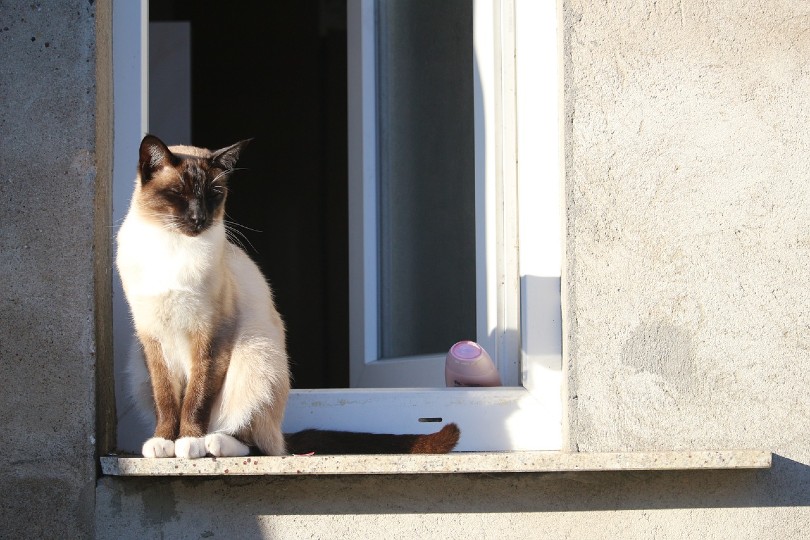
At first glance, a cat with a kinked tail may look as though it’s been in some kind of an accident because there’s a visible kink present. While a cat can certainly get a kink in its tail if it suffers from some type of tail injury, some cats are born that way. The Burmese and Siamese, in particular, can be born with kinked tails.
If you happen to run into a cat with a kinked tail, you probably don’t have to worry that the feline needs help because they may have been born that way.
8. Tailless
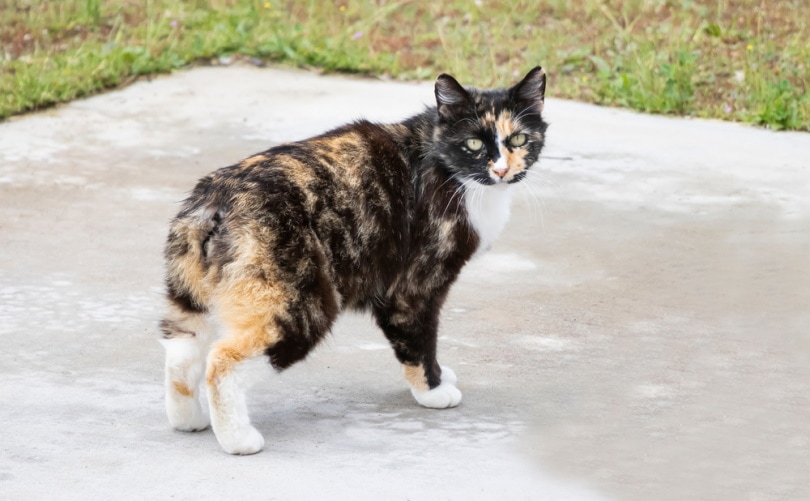
While there are many lengths, sizes, patterns, and shapes of cat tails, some cats are completely tailless! You may think that a cat born without a tail would have trouble communicating how they feel or problems with their balance. The truth is that tailless cats are born that way, which means they’re completely used to not having them.
Some of the most common cat breeds born without tails include the Manx and Cymric. The Highlander is another cat that has no tail, although this breed can have a very short, stubby tail. When one of these cats is completely tailless, it turns heads everywhere it goes because of its odd, unusual looks.
Final Thoughts
Many types of domestic cats can be easily identified by their physical characteristics. Some breeds are large, single-colored animals, while others are smaller in size with multicolored fur. Some cats have big, wide faces and large eyes, while others are more petite.
One part of a cat’s anatomy you can use to help identify the breed is the tail. The next time you see a cat, check out its tail to see what type it has. Unless, of course, it’s tailless!
Featured Image Credit: Anete Lusina, Pexels

